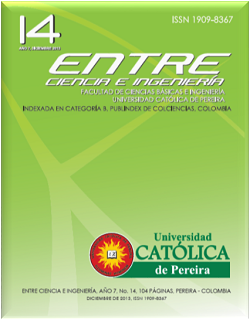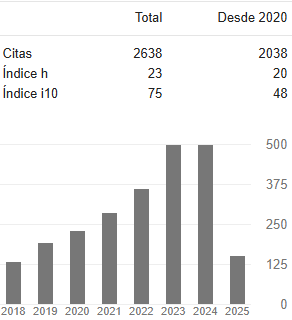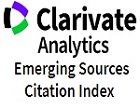Soluciones para los fluidos entre paredes paralelas y porosas
DOI:
https://doi.org/10.31908/19098367.599Palabras clave:
Paredes paralelas porosas, conducción de fluidos, inyección, expulsiónResumen
Una conducción de fluido se inyecta de forma continua o expulsada a través de un par de paredes porosas paralelas y se escapa en ambas direcciones a lo largo del canal. El flujo forma un punto de estancamiento en el centro y la emanación es restringida por un campo magnético. Un análisis teórico de soluciones de estado estacionario de las ecuaciones MHD en el caso incompresible se da como una función de tres parámetros: el número de Reynolds Re, el número de Reynolds magnético Rm y Alfvenic número de Mach MA para algunos de límites asintóticos significativos. Para conducir plasma (Rm >> 1) se encontró que el campo magnético restringe el flujo de salida para MA <1 y acciona el escape para MA>1. En movimientos de baja conductividad (Rm << 1) el campo magnético contiene (y se puede utilizar para el control de) la emanación.
Descargas
Referencias
A. S. Berman, “Laminar flow in channels with porous walls,” Journal of Applied Physics, vol. 24 pp1232-1235, March 1953.
J. R. Sellars, “Laminar flow in channel with porous walls at high suction Reynolds number,” Journal of Applied Physics, vol 26 pp 489-490, Apr 1955.
S. W. Yuang, “Further investigation of laminar flow in channel with porous walls,” Journal of Applied Physics vol 27 pp. 267-269,March 1956.
I. Proudman, “An example of steady laminar flow at large Reynolds number,” Journal of Fluid Mechanics, vol. 9 pp. 593-602 ,December 1960
G. M. Shrestha, “Singular perturbation problems of laminar flow in a uniformly porous channel in the presence of a transverse magnetic field,” Quarterly Journal of Mechanics and Applied Mathematics, 2nd ed., vol. 20, pp. 233-246 , May 1967.
R. M. Terril, “Laminar flow in a uniformly porous channel,”, Aeronaut. Quart, vol. 15, pp. 299-310, 1964.
J.F.Brady, A. Acrivos.“Steady flow in a channel or tube with an accelerating surface velocity. An exact solution to the Navier Stokes with reverse flow”, journal of Fluid Mechanics, vol. 112, pp. 127- 150, November 1981.
J. F. Brady, “Flow development in a porous channel and tube”, Physics of Fluids, vol. 27, pp. 1061-1067, March 1984.
W. A. Robinson,“The existence of multiple solutions for the laminar flow in a uniformly porous channel with suction at the both walls”, Journal of Engineering Mathematics, vol 10, pp 23-40, Apr 1976.
M. B. Zaturska, P. G. Drazin, W. H. H. Banks, “On the flow of a viscous fluid driven along a channel by suction at porous walls,” Fluid Dynamics Research, vol. 4, pp.151-178, 1988.
E. B. B. Watson, W. H. H. Banks, M. B. Zaturska, P. G. Drazin,“On transition to chaos in two-dimensional channel flow symmetrically driven by accelerating walls”, Journal of Fluid Mechanics, vol. 212, pp. 451-485, March 1990.
S. M. Cox,“Two dimensional low of a viscous fluid in a channel with porous walls”, Journal of Fluid Mechanics, vol. 227, pp. 1-33,January 1991.
W. H. H. Banks, P. G. Drazin, M. B. Zaturska,“On perturbation of Jeffrey-Hammel flow”, Journal of Fluid Mechanics, vol 186 ,559- 581, January1988.
W. H. H. Banks, M. B. Zaturska,“On flow through a porous annular pipe”, Physics of Fluids ,vol. 4 ,pp. 1131-1141, Apr 1992
C. L. Taylor, W. H. H. Banks, M. B. Zaturska, P. G. Drazin,“ Three dimensional flow in a porous channel”, Quarterly Journal of Mechanics and Applied. Mathematics, vol. 44, pp. 105-133,March 1991.
L. M. Hocking,·“Nonlinear instability of the asymptotic suction velocity profile”, Quarterly Journal of Mechanics and Applied Mathematics,vol 28, pp 341-353, August 1975.
Descargas
Publicado
Número
Sección
Licencia
Derechos de autor 2019 Entre Ciencia e Ingeniería

Esta obra está bajo una licencia internacional Creative Commons Atribución-NoComercial 4.0.



















